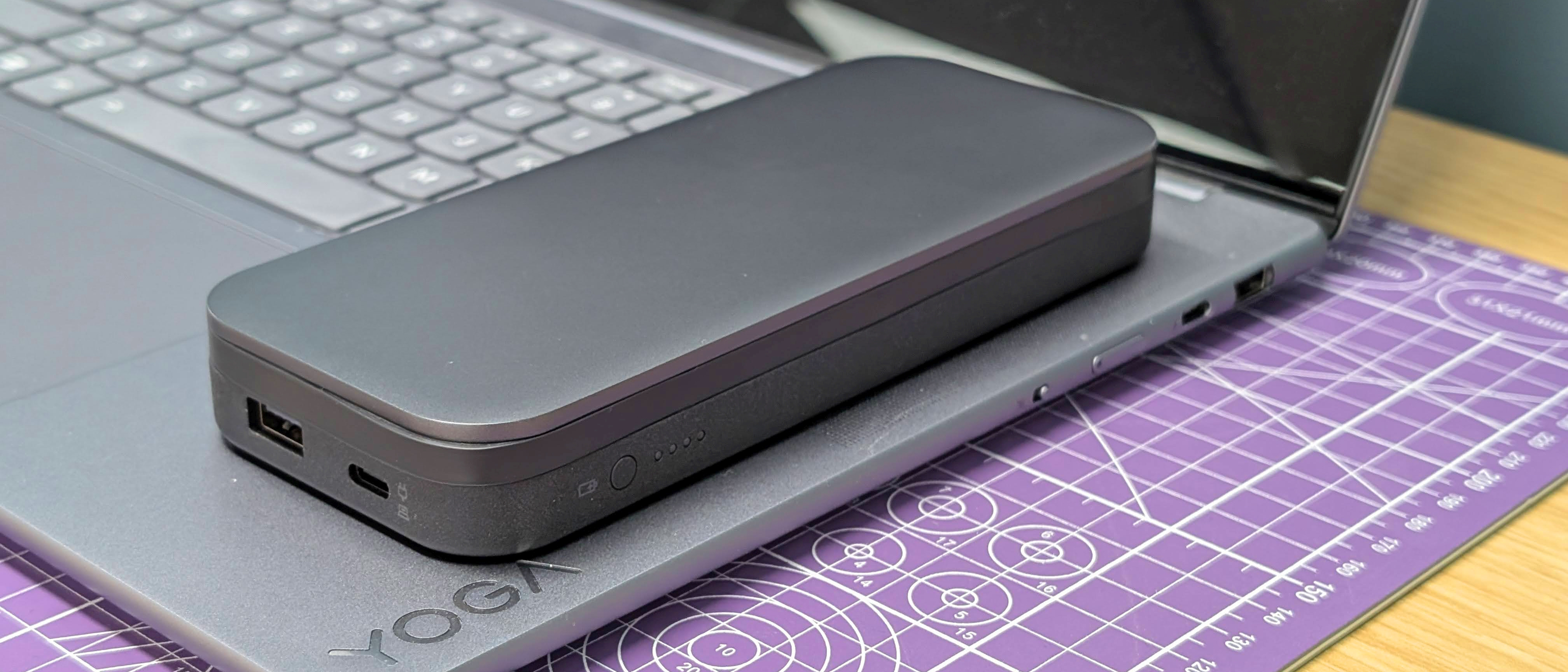TechRadar Verdict
The Lenovo Go USB-C laptop power bank stands out for its built-in 44 cm cable that cuts bag clutter and a slim, light 20,000mAh design that still delivers up to 65W. It comfortably tops up a notebook, phone or handheld, can charge three devices at once and stays cool under load. Just note that it doesn’t support Samsung Super Fast charging, the cable end can be a touch bulky and it’s expensive if not on sale.
Pros
- +
Built-in 44 cm USB-C cable
- +
Decent 65W output
- +
Slim and light for the capacity
Cons
- -
Can’t do Samsung Super Fast charging
- -
No 12V USB-C charging
- -
Expensive if not on sale
Why you can trust TechRadar
Lenovo Go USB-C laptop power bank review
I rely on a power bank daily, and only the most powerful options can keep up with the demands of laptop charging or topping up portable gaming devices.
While there are plenty of great options in our guide to the best power banks, most don’t have built-in cables, so you need to carry some extras when on the go.
And that’s where the Lenovo Go slots in, with up to 65W output and a built-in cable that hides away in the power bank itself, so it's ready to go whenever needed.
Aside from the cable, it also has both a USB-C and a USB-A port and can charge three devices at once.
The Lenovo Go features a typical 20,000mAh, 74Wh (though the unit itself says 77Wh) capacity, which makes it ready to take on flights without permission, and capable of topping up a laptop at least once or keeping your phone charged for days. It’s also enough to give the 50Wh battery in the Steam Deck a full charge.
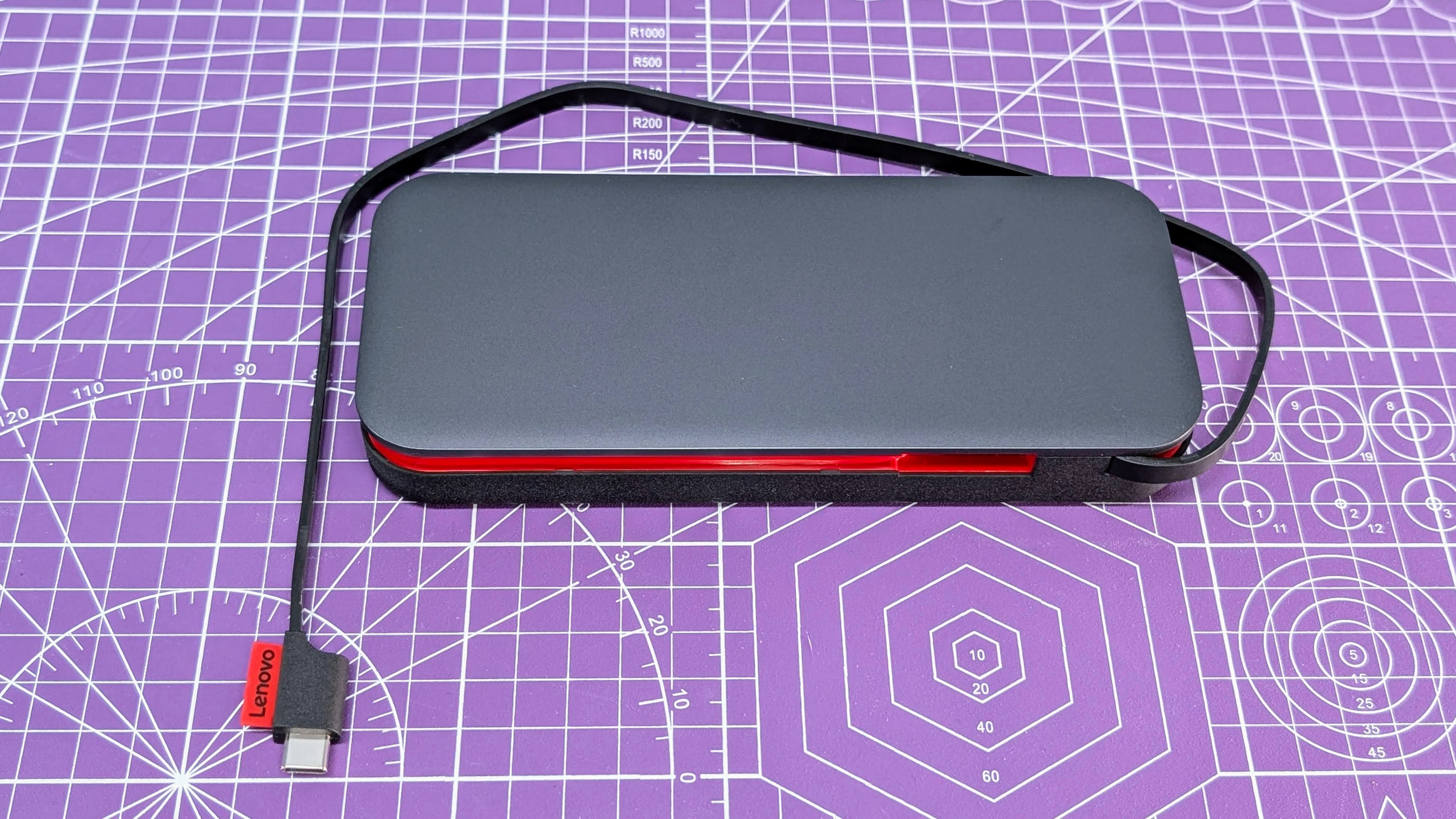
At 170 × 72 × 23 mm (6.69 × 2.83 × 0.91 inches), it’s reasonably compact, and the 390 grams (0.86 lb) weight is fairly typical considering the capacity. The design is slim enough to slip into a bag (including briefcase-style laptop bags) without adding bulk.
The built-in USB-C cable is 44 cm (17.3 in) long and wraps around a recess in the power bank for storage. While secure and easy to deploy, it’s very slightly fiddly to put back into place neatly once you are finished charging.
Sign up for breaking news, reviews, opinion, top tech deals, and more.
The USB-C end is slightly bulky, so it may not fit in some USB-C ports with tight access, such as phones with thicker cases.
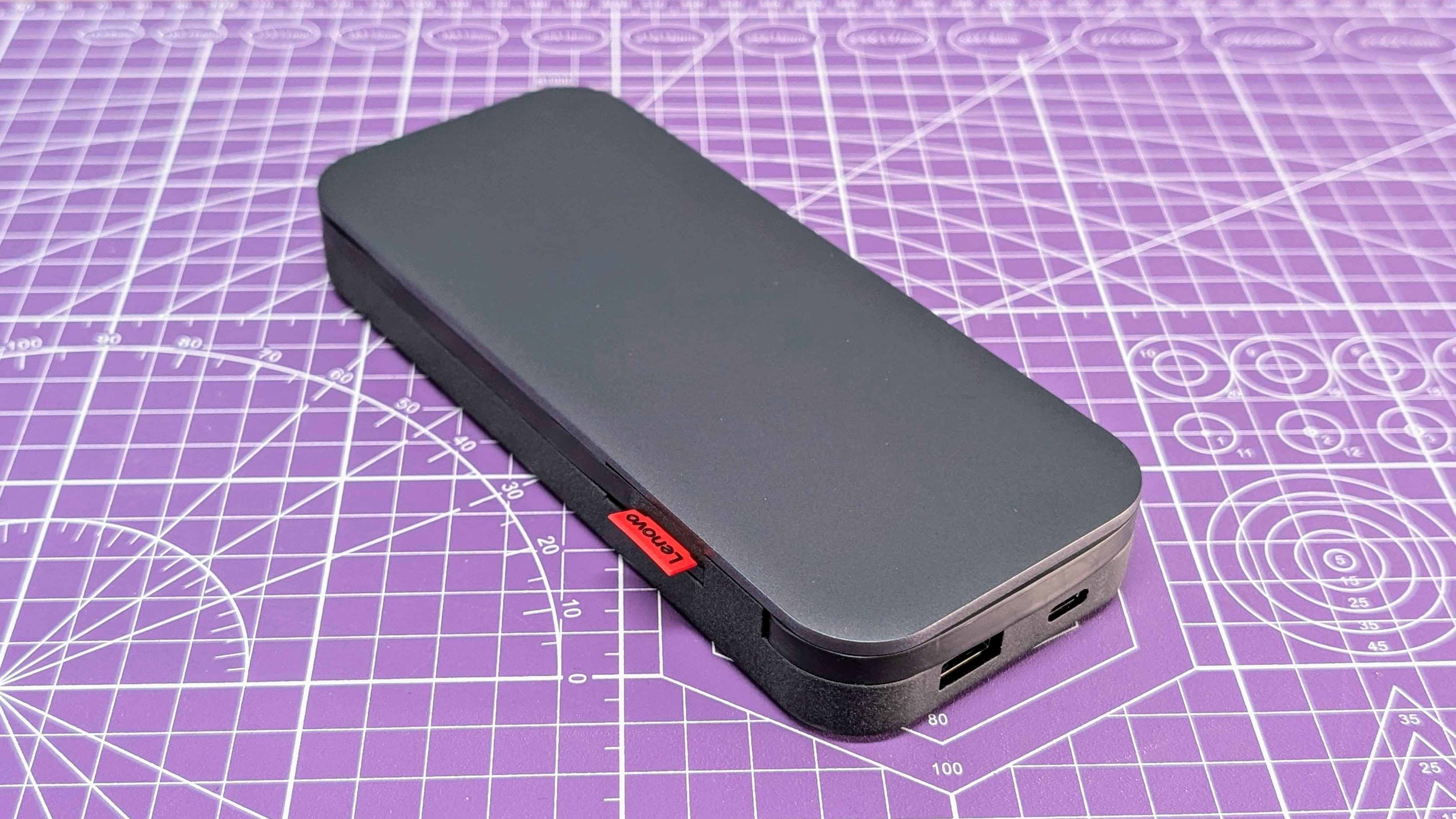
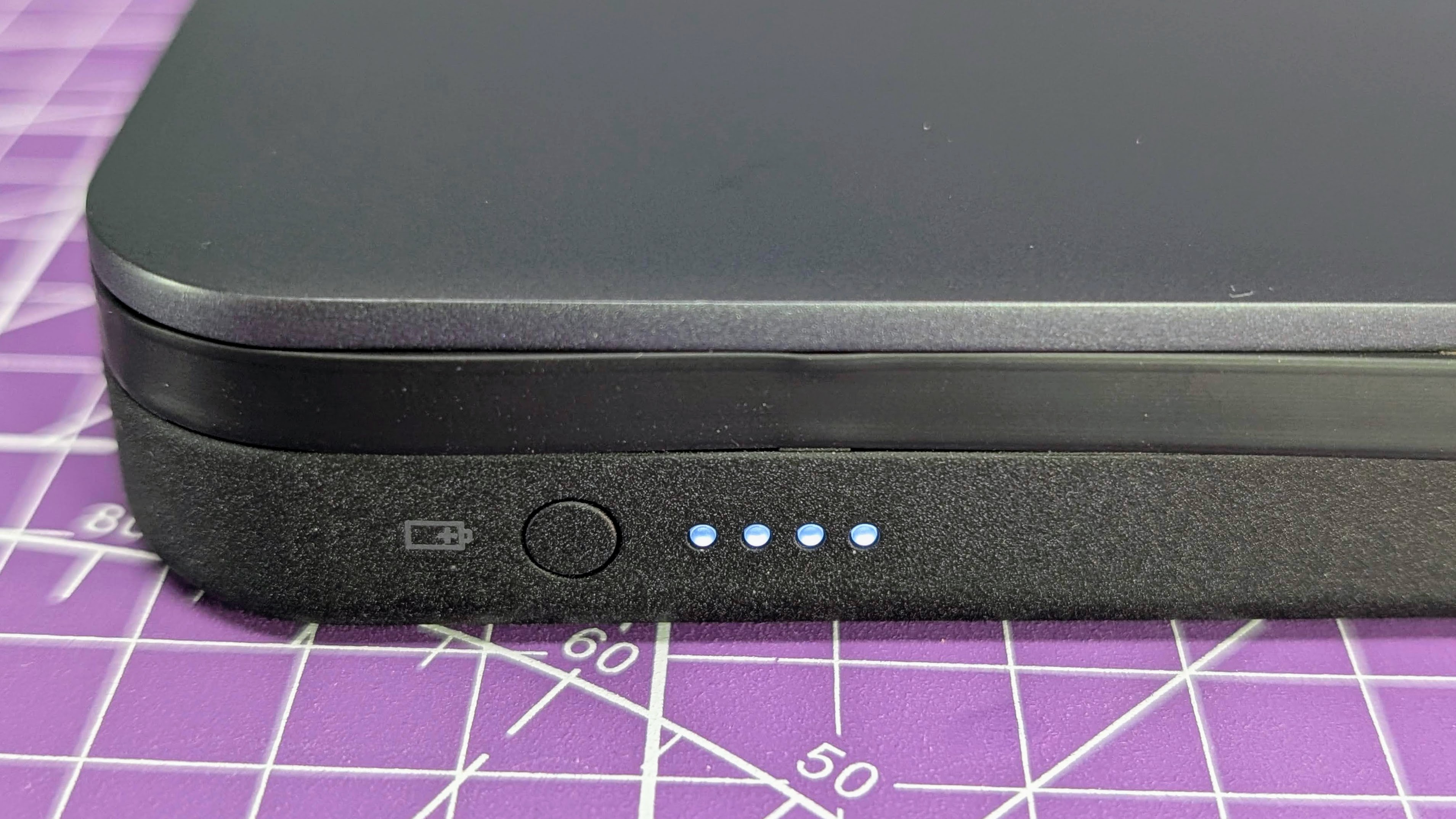
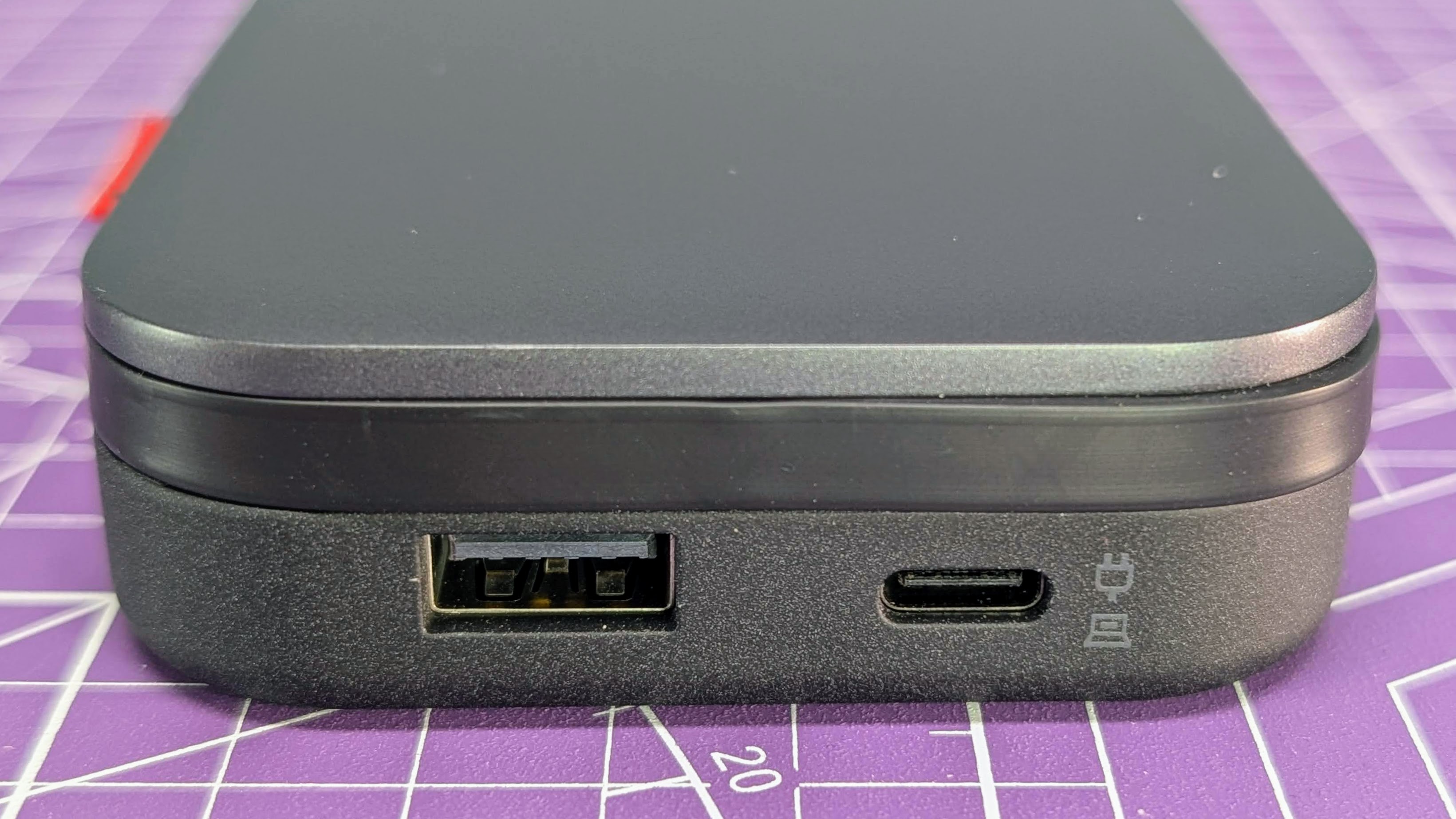
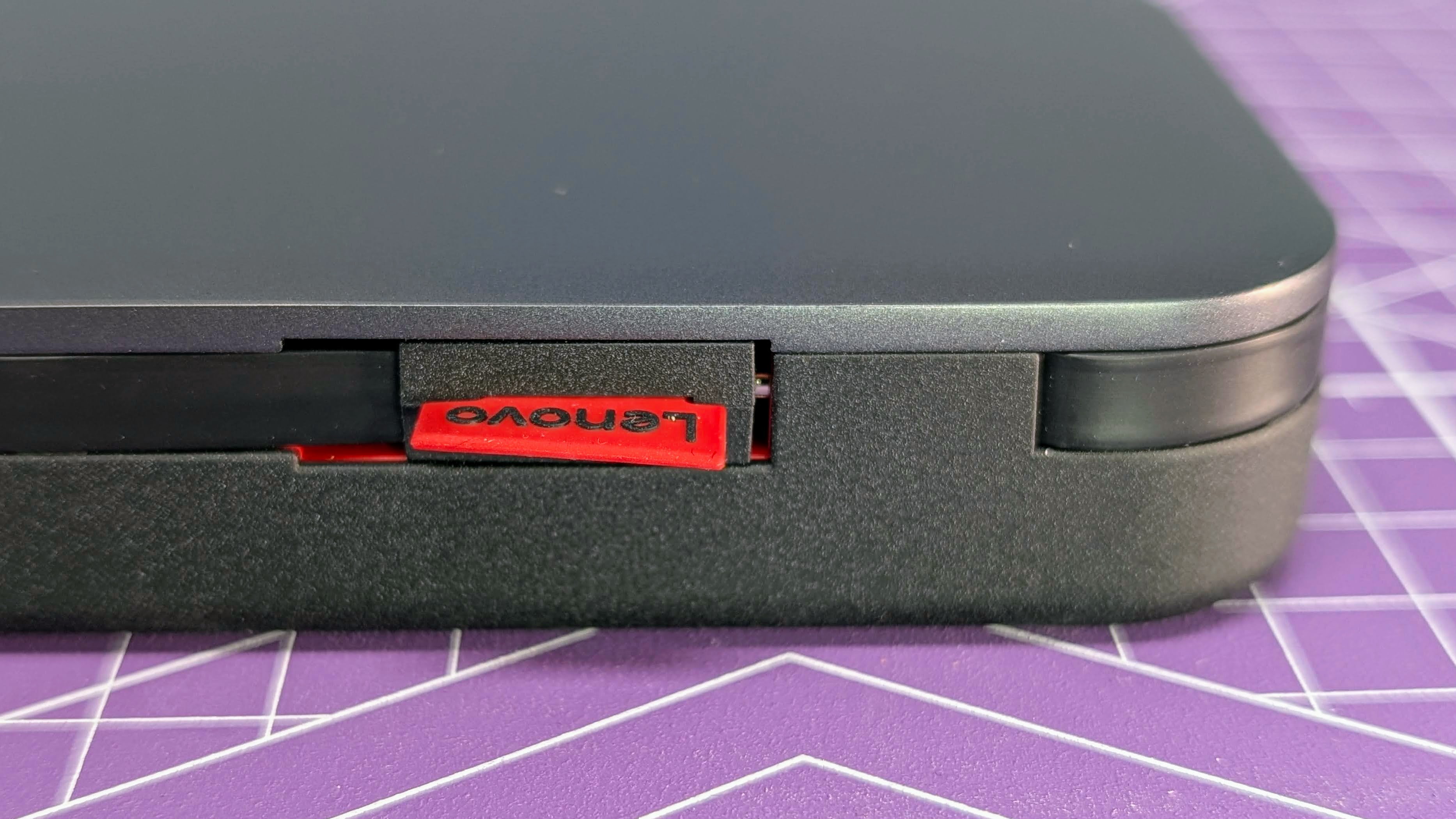
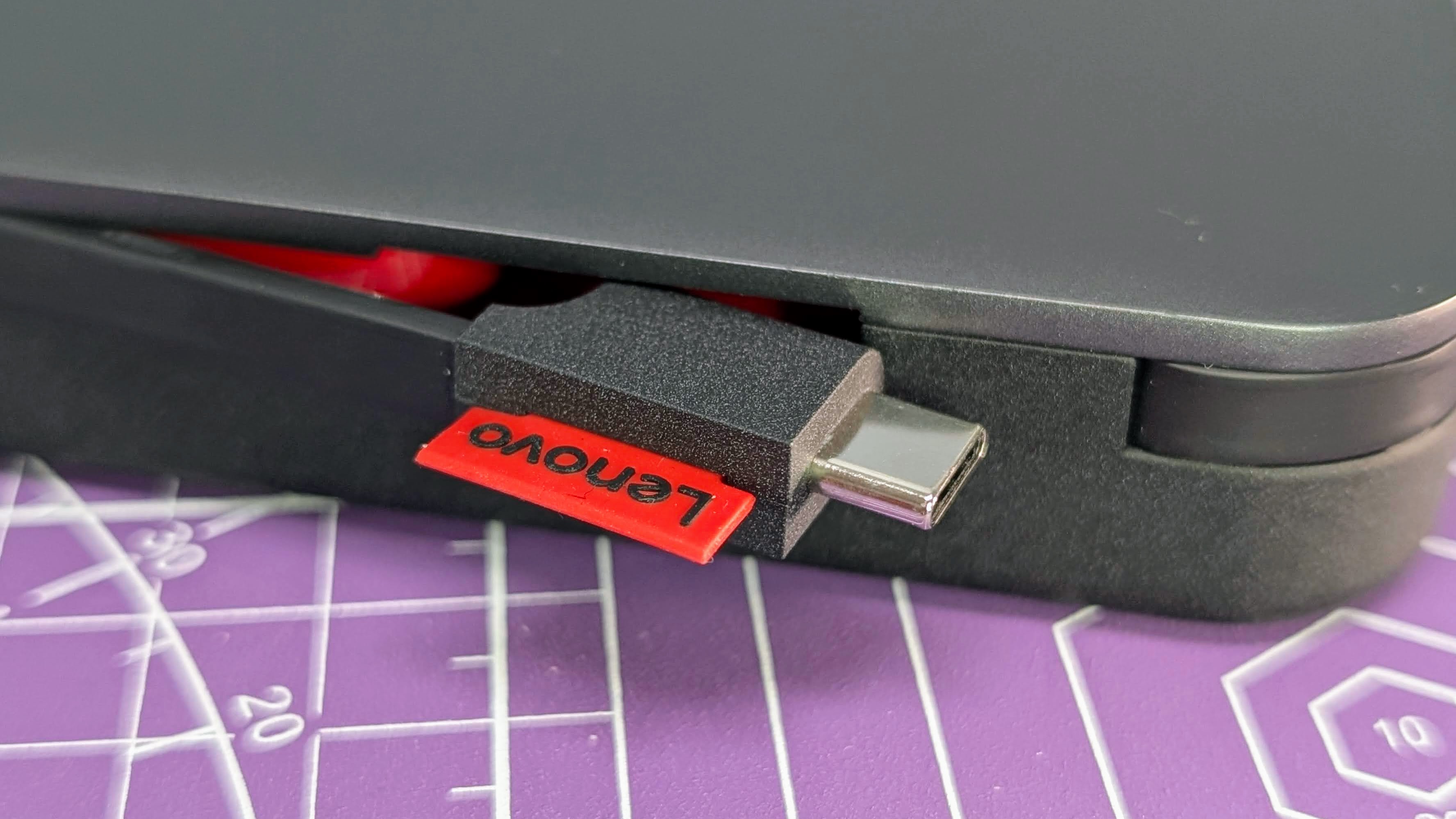

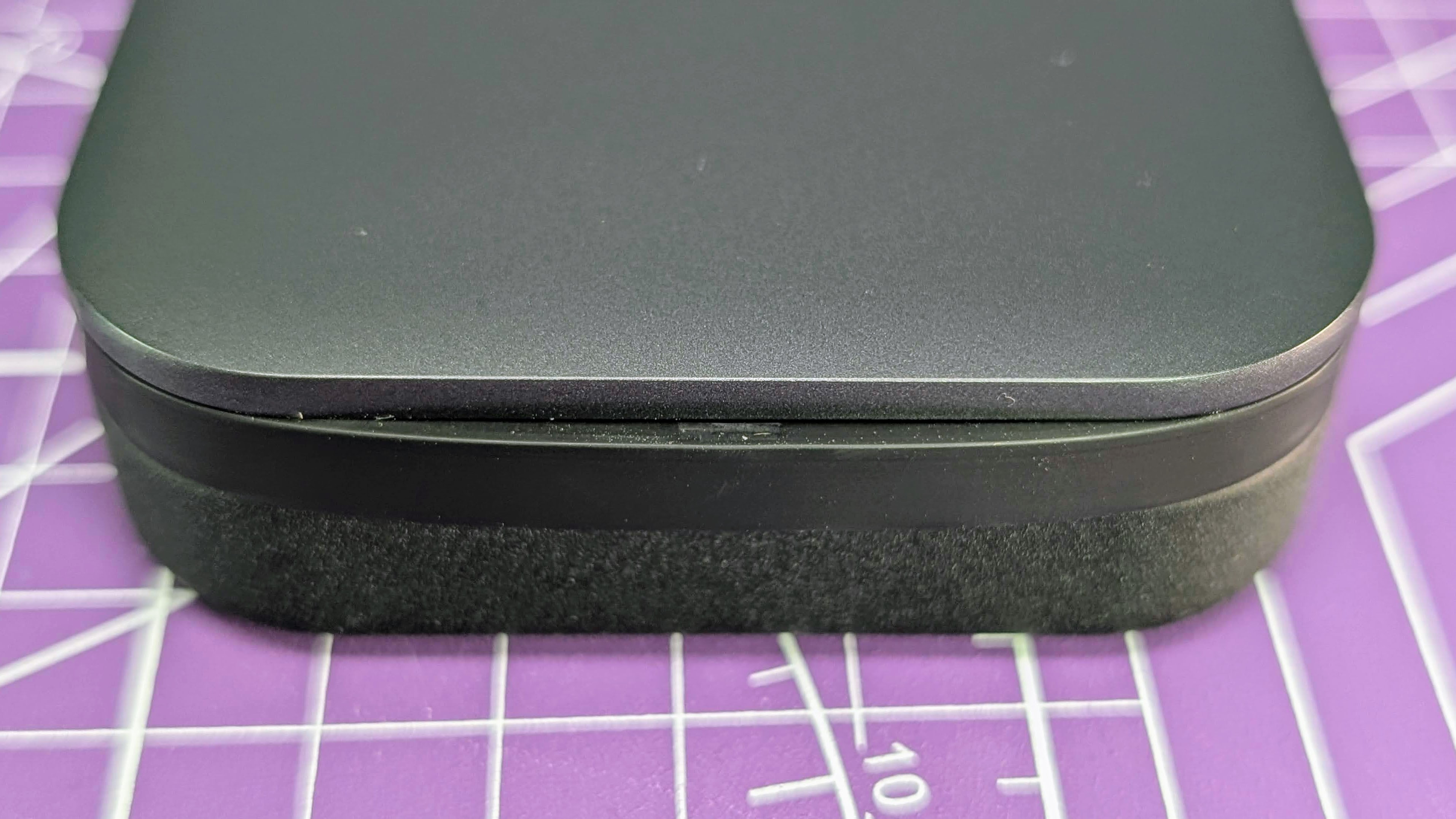
The power bank uses a simple four-LED system to display remaining capacity in 25% steps, which works fine but isn’t quite as nice as a digital readout. The plastic shell feels solid in hand and is quite tough, and despite rattling around in my bag for a few weeks, it shows no signs of undue wear.
The Lenovo power bank does face stiff competition from similar-spec power banks, such as the often slightly cheaper Anker 20,000mAh 87W power bank. The Lenovo is slightly slimmer (but longer) and lighter, but to give comparative value for money, it needs to be picked up when on sale.
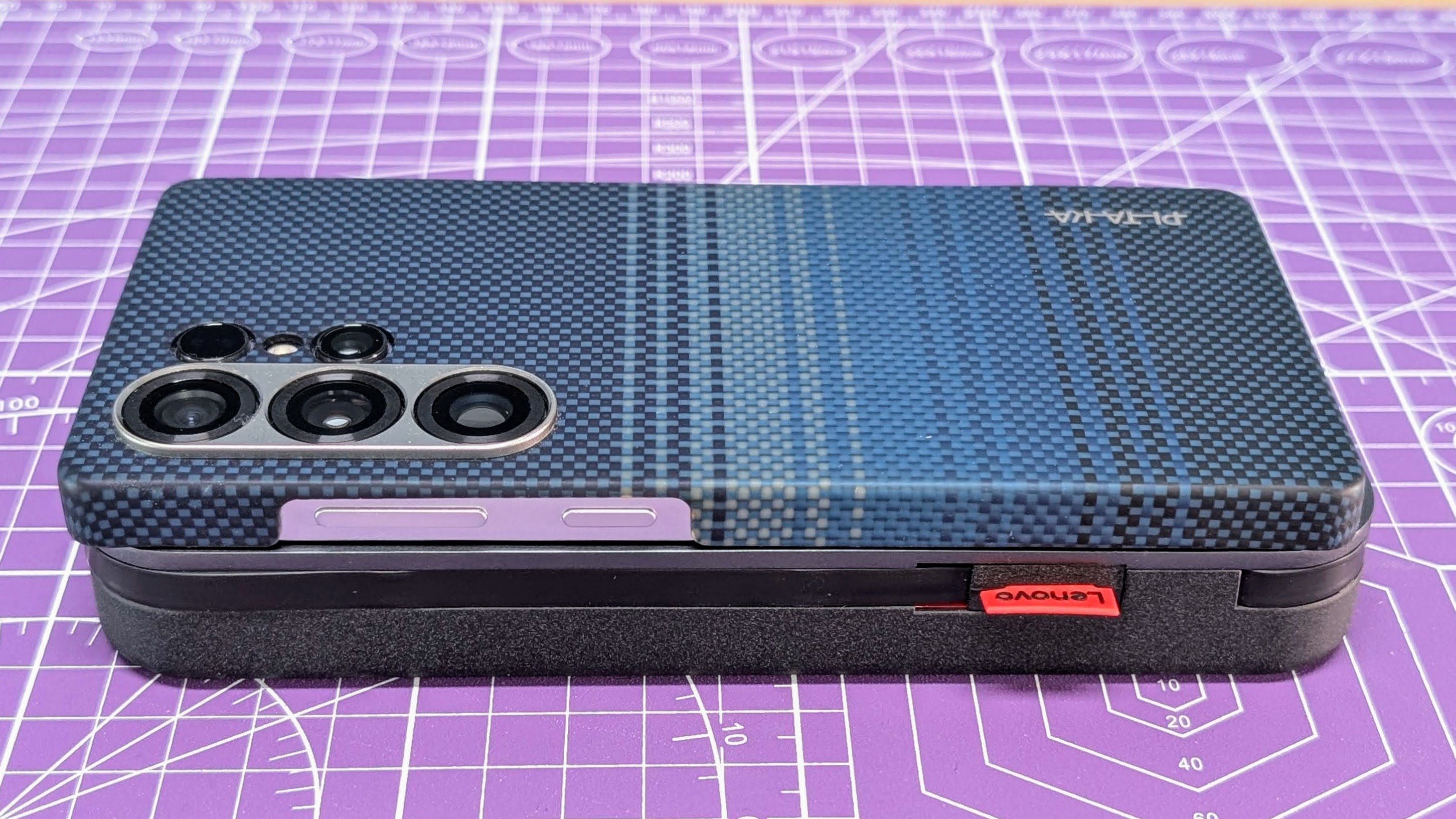

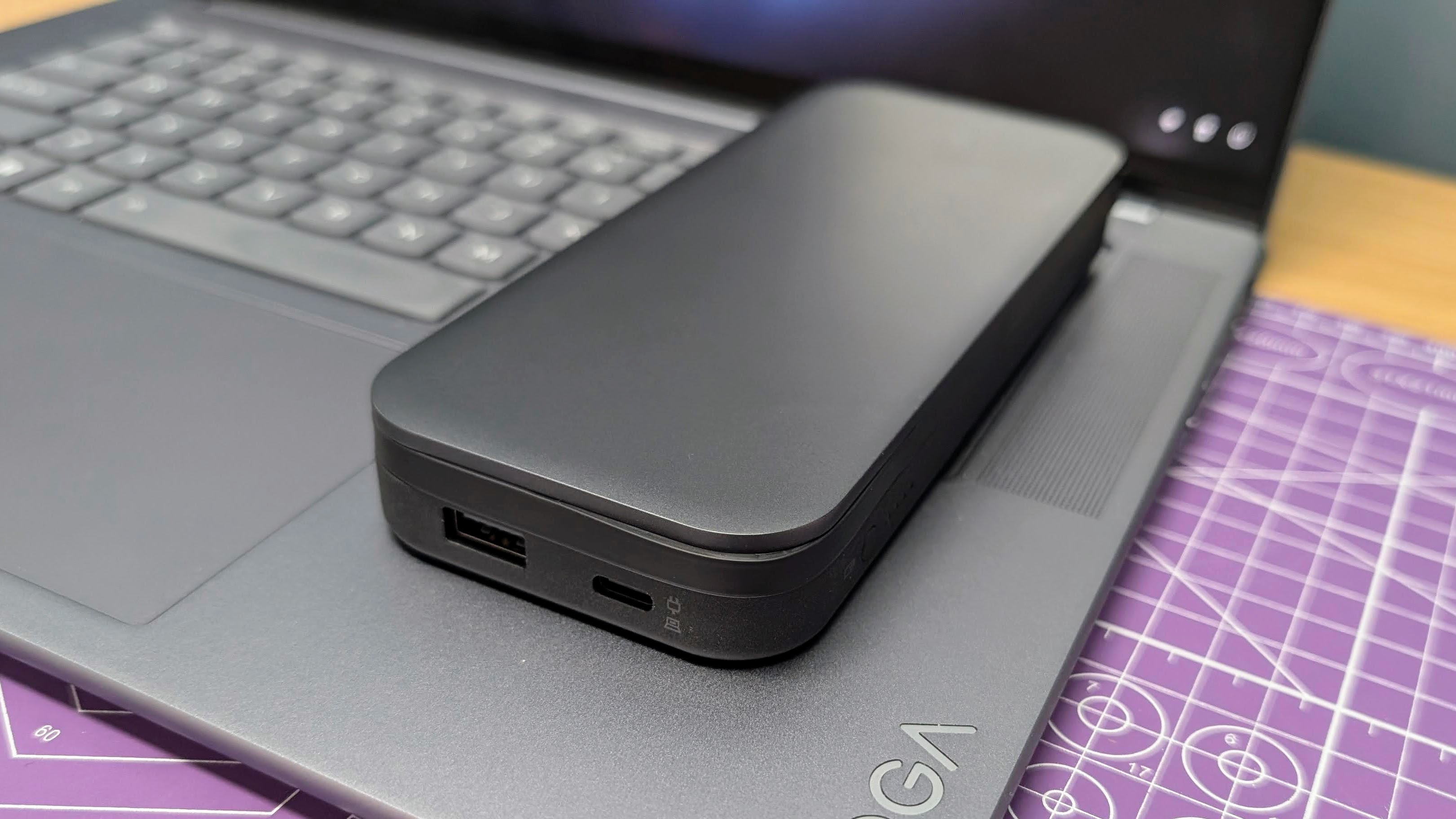

The Lenovo Go USB-C laptop power bank outputs USB PD3.0 spec voltages on the USB-C cable and USB-C port – 5V 3A, 9V 3A, 15V 3A and 20V 3.25A. This means it will happily fast charge most phones, laptops and other devices like handheld gaming machines at up to 65W. The USB-A port supports the QC3.0 protocol, with 5V, 9V, 12V or variable from 3.6V to 12V, at up to 18W.
Notably, it doesn’t support PPS (Programmable Power Supply), so it won’t do 45W Samsung Super Fast charging like the Iniu P50 can.
The Lenovo power bank also doesn’t output 12V on the USB-C ports, which isn’t a problem for most users, but it’s still worth mentioning. There aren’t many devices that exclusively need 12V USB-C charging, but, for example, a 12V option is needed to get the fastest charging on DJI Mini drone batteries.
So while the Lenovo doesn’t have the latest protocol support, for normal use it’s still more than capable of fast charging any of your devices.
Lenovo Go USB-C laptop power bank: Price & specs
You can buy the Lenovo power bank directly from Lenovo or various other marketplaces and retailers.
List price is $140.99 / £84 / AU$138, but it's often sold for much less during sale events, so it's well worth waiting for a discount if you don't need it right away.
The power bank has a standard 1-year warranty, and we are a little disappointed that Lenovo didn’t offer at least 2 years.
Price | $140.99 / £84 / AU$138 |
Capacity | 20,000mAh / 74Wh |
Single Port Output | 65W |
Number of Ports | 3 |
USB-C | 2x in/out |
USB-A | 1x |
Dimensions | 170 × 72 × 23 mm (6.69 × 2.83 × 0.91 inches) |
Weight (measured) | 391 g (0.86 lb) |
Phone charges | 3 to 4 times |
Laptop charges | 0.5 to 1 times |
Lenovo Go USB-C laptop power bank: Test results
Many power banks make bold claims, but in real-world testing they don't live up to the hype. So to weed out the duds, I do comprehensive testing to verify charge voltages, confirm protocol support and log capacity tests.
Overall, the Lenovo power bank gives solid results considering it is slimmer and lighter than many similar-spec options and has a built-in cable.
Test | Usable Capacity | Efficiency | Score |
|---|---|---|---|
65W laptop charging | 61.5 Wh | 83.1% | 3.5 / 5 |
30W laptop charging | 62.5 Wh | 84.4% | 3.5 / 5 |
20W phone charging | 65.3 Wh | 88.2% | 4 / 5 |
10W charging | 68.1 Wh | 92% | 4.5 / 5 |
For 65W laptop charging, the Lenovo Go outputs 61.5Wh of the rated 74Wh available, giving a typical 83.1% efficiency rating. Lenovo also rates the power bank at just 48Wh when outputting 65W (20V 3.25A), so the real-world test results of 61.5Wh are much better.
I will note, though, that after it hits about 45% capacity remaining, it does renegotiate to a slower charge rate to protect the battery cells. This is fairly typical, and when testing it on a laptop that is being used the lower average power draw does not trigger this mode.
At an average 30W output when running a laptop, efficiency is slightly better, at 84.4%.
For phone charging at 20W, the Lenovo power bank hit an excellent 88.2% efficiency, and if charging slowly at 10W, it can output 92% of the rated capacity.
The power bank is rated for 74Wh by Lenovo online, but the actual power bank notes 77Wh. This is a slight over-provisioning of capacity by Lenovo, which is a good thing, and for the efficiency calculations above I used the 74Wh rating.
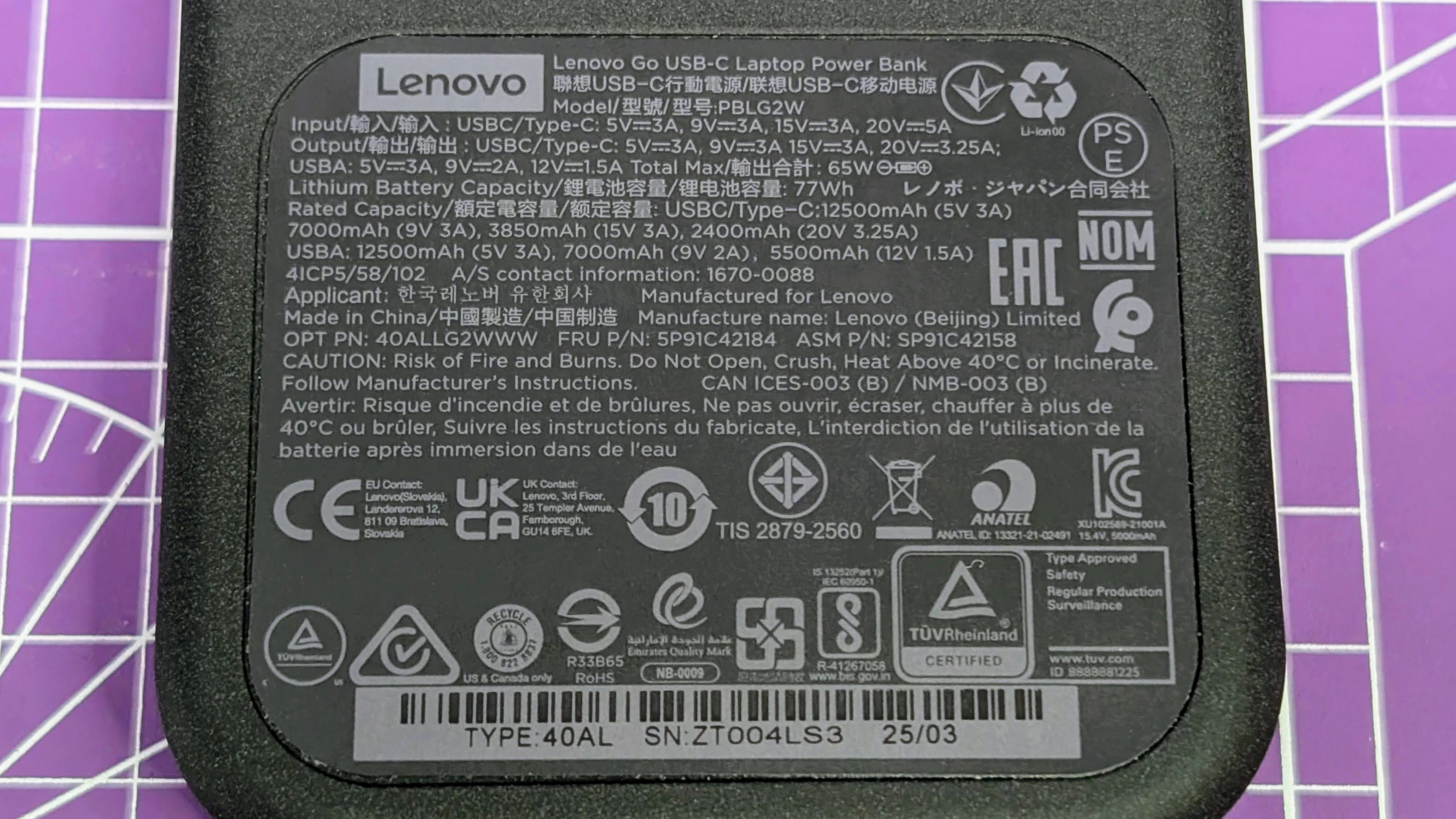
When pushed hard with a sustained maximum output until empty (such as when charging a laptop), the Lenovo power bank reached a warm but not problematic 42°C (108°F), while phone charging only saw it reach 28°C (82°F). While it’s generally best to charge a laptop on a desk, the Lenovo power bank stays cool enough that I would have no problem using it in a bag.
The power bank can charge at up to 100W via the built-in cable or USB-C port and takes about 1.5 hours to top back up.
Rated Output Capacity | 2400 mAh / 48Wh at 20V 3.25A |
PPS support | No |
Included cable | Built-in, 5A |
IN1 (USB-C port) | 5V⎓3A; 9V⎓3A; 15V⎓3A; 20V⎓5A |
IN2 (USB-C cable) | 5V⎓3A; 9V⎓3A; 15V⎓3A; 20V⎓5A |
OUT1 (USB-C port) | 5V⎓3A; 9V⎓3A; 15V⎓3A; 20V⎓3.25A |
OUT2 (USB-C cable) | 5V⎓3A; 9V⎓3A; 15V⎓3A; 20V⎓3.25A |
OUT3 (USB-A port) | 5V⎓3A; 9V⎓2A; 12V⎓1.5A |
Should I buy the Lenovo Go power bank?
Buy it if…
You need laptop charging
The 65W output is ideal for quick top-ups.
You want a power bank with a built-in cable
The 44 cm cable helps cut down clutter in your bag.
Don't buy it if…
You need PPS charging
The Lenovo power bank does not support PPS so it can’t hit the full Samsung Super Fast charge speeds.
You are after a more affordable option
While not too bad when on sale, the Lenovo power bank is expensive at list price.
Also consider
The Lenovo Go laptop power bank is a great option for everyday laptop and phone charging, but below are a few other options if you are looking for something different. For even more recommendations, check out our guide to the best power banks. Or, if you are planning a holiday soon, get a full rundown on the airline rules when traveling with power banks.
Iniu P50 power bank
Need something smaller for charging a phone? With 45W fast-charge capability and a 10,000mAh (37Wh) capacity, the Iniu P50 is a great power bank to slip into your bag when on the go.
ZMI No.20
This power bank uses premium components, has a large 25,000mAh (90Wh) capacity and is able to fast-charge anything from a phone to a laptop at up to 100W.
What's your favorite power bank for everyday carry? Or is there a specific model you think I should test?
Let me know in the comments below.
How I test power banks
I get hands-on with every power bank I test and conduct extensive evaluations in both lab and real-world scenarios. Using tools like the ChargerLab POWER-Z KM003C, I measure charge voltage, check protocol support, and log capacity tests.
Each power bank is also tested with everyday devices, including phones, tablets and laptops, and is connected to a programmable load tester for multiple charge cycles. I carry a selection daily in both pockets and bags to assess their durability and ability to withstand everyday use.
All measurements and weights are personally verified, ensuring accuracy beyond the manufacturer’s listings. It’s worth noting that many power bank reviews don’t do this sort of testing, so they should be taken with a grain of salt.
Want to know more? Read about how we test.

Lindsay is an Australian tech journalist who loves nothing more than rigorous product testing and benchmarking. He is especially passionate about portable computing, doing deep dives into the USB-C specification or getting hands on with energy storage, from power banks to off grid systems. In his spare time Lindsay is usually found tinkering with an endless array of projects or exploring the many waterways around Sydney.
You must confirm your public display name before commenting
Please logout and then login again, you will then be prompted to enter your display name.
